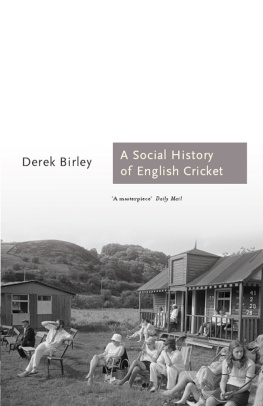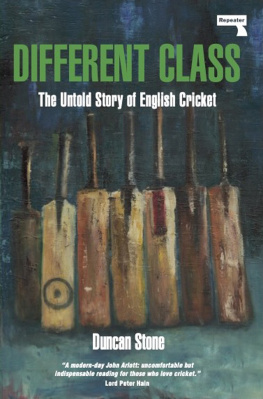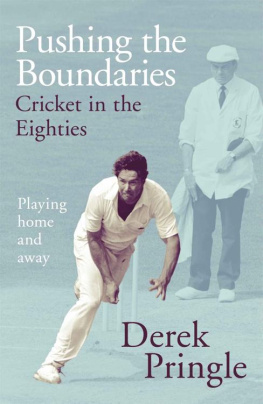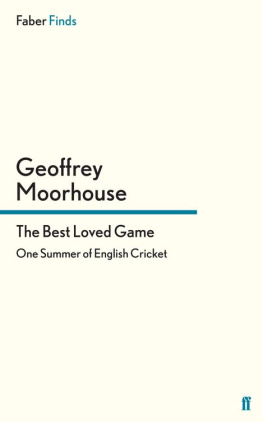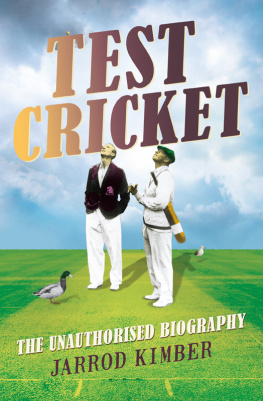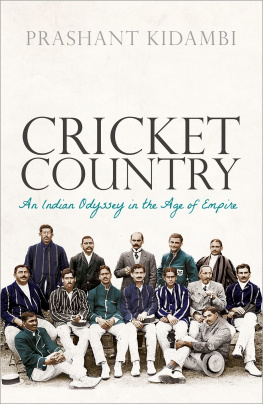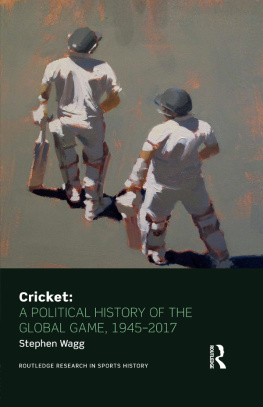A SOCIAL HISTORY
OF ENGLISH CRICKET
Sir Derek Birley's other books include The Willow Wand (also published by Aurum Press) and the trilogy Sport and the Making of Britain, which won the British Society of Sports History's Aberdare Literary Award in 1995. He retired as vice-chancellor of the University of Ulster in 1991 after a distinguished career as an educational administrator. He died in 2002.
A Social History of English Cricket and The Willow Wand are acknowledged as two of the finest books ever written about cricket. In addition to winning the William Hill Sports Book of the Year award for 1999 the premier award for sports books A Social History of English Cricket was voted the Cricket Society's Book of the Year. John Arlott praised The Willow Wand as a quite unique cricket book... witty, scholarly, readable and thought-provoking, not only salutary but essential reading for every cricket-follower, and Time Out described it as a veritable tour-de-force... rips through the veil put up by orthodox cricket history.
Dear Sports Fan,
Sir Derek Birley's A Social History of English Cricket is, quite simply, a masterpiece.
Winner of the William Hill Sports Book of the Year award, it is an encyclopaedic survey of the game, from its humble origins to modern floodlit finishes. But is also a story of English culture, of manners, hierarchies and politics and, as Ian Wooldridge contends, will teach an intelligent child more about their heritage than he or she will ever pick up at school.
A Social History of English Cricket is one of six books that begin our Aurum classics sports list. Publishing sports writing that does justice to the story being told has always been our priority at Aurum. This new series, which covers sports ranging from cricket to boxing, rugby to baseball, gives us the opportunity to celebrate both our own books that, over the years, have come to obtain classic status, and also bring back into print neglected books that deserve to be acclaimed as such. I hope that you will enjoy them all whether you are coming to the subject, the sport, or the writer for the first time.
At Aurum Press we take great care in shaping our sports list to be as diverse and inspiring as possible and we would love to hear what you think of the classics. Let us know on twitter at #aurumsportsclassics. Every month new tweets will be entered into a draw to win a set of all the titles. You can also email me at to find out more about our forthcoming titles.
I would also be delighted to hear your suggestions for other forgotten classics, which you think merit re-publishing for a new generation.
Yours sincerely,
Robin Harvie
July 2013

First published in 2013
by Aurum Press Ltd, 74-77 White Lion Street, London N1 9PF
First published by Aurum Press in 1999
This e-book edition first published in 2013
All rights reserved
Copyright Derek Birley 1999
The right of Derek Birley to be identified as author of this work has been asserted in accordance with Section 77 of the Copyright, Designs and Patents Act 1988
This e-book is copyright material and must not be copied, reproduced, transferred, distributed, leased, licensed or publicly performed or used in any way except as specifically permitted in writing by the publishers, as allowed under the terms and conditions under which it was purchased or as strictly permitted by applicable copyright law. Any unauthorised distribution or use of this text may be a direct infringement of the author's and publishers rights, and those responsible may be liable in law accordingly
Every effort has been made to trace the copyright holders of material quoted in this book. If application is made in writing to the publisher, any omissions will be included in future editions.
E-book conversion by CPI Group
ISBN 978 1 78131 176 9
ePub ISBN 978 1 84513 750 2
Mobi ISBN 978 1 84513 750 2
Contents
To my wife, Norma, with much love
O NE OF THE CRISPER pronouncements about the nature of sport is that of Jonathan Swift: Most sorts of diversion in men, women, children and other animals are an imitation of fighting. And, he might have added, some of them are imitations of out-and-out war. The English, who like to think that they are peaceable folk, slow to rouse but indomitable when they put their minds to it, also lay claim to the creation of a sublime diversion. Cricket is one of the more sophisticated latter-day war surrogates, a ritualised conflict in which each side in turn is required to attack and to defend. It is spiced with danger, but cunning is as important as physical strength. It requires strategy and tactics. It is a team activity, yet individual members operate in turn, and leadership is crucial. Not least, its techniques must change: as defence learns to cope with attack, new weapons and new stratagems must be devised.
This is an account of how the English took this game and made it into one of their most cherished institutions; how it was snatched from rustic obscurity by gentlemanly gamblers and in the late eighteenth century became the latest metropolitan fashion. In the nineteenth it became a symbol of the ideals of the new model public schools which undertook the task of training the leaders of Church and State as Britain took on the responsibilities and the emotional trappings of imperialism. A by-product of this powerful movement was the preservation of the values of this imperial heyday well into the present century, notably in the distinction between Gentlemen and Players. Similarly the game itself was freighted with extraneous moral overtones such as not cricket of so elevated a nature as to promote a well-intentioned but ultimately sanctimonious literature derived from Tom Brown's Schooldays with the theme that cricket is more than a game ... an institution. This notion inspired some fine cricketers in an age of privilege still referred to affectionately as cricket's golden age but also exposed the law-givers to hypocrisy as professionalism began to emerge from the shadows with the insistent rise of competition which suffuses the ascendant forces of urbanisation and democracy, leading eventually to cricket becoming part of the leisure industry. In recent years cricket has struggled to keep pace with the tempo of the age, and has sometimes seemed to be lost in a dreamworld of past glories and outworn social attitudes. It now stands at a crossroads. One road points to profound and unprecedented changes in the structure of the game, and this is not a prospect that most cricket-lovers enjoy. However, the rewards are potentially enormous, and if the new England and Wales Cricket Board can forge a positive partnership with the county clubs and the Professional Cricketers Association, they have an opportunity not merely to preserve the game but to make it better than ever.
Histories tend not to offer too much assistance in deciding future directions, but they may at least help to show how we got to where we currently stand, and, as a personal hope, this one may also offer a little entertainment along the way.
E NGLISH CRICKET WAS BORN at some time in the later Middle Ages, of uncertain, though bucolic, parentage. Amongst its near relations, now defunct, are folk-games like stoolball (a unisex affair); the hard-ball variant, stowball; and the cat family (tip-cat, kit-cat, cat and dog, cat-in-the-hole), which used bits of wood as the missile. Its putative ancestor is

